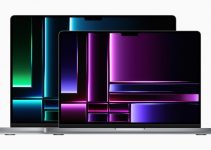If you are currently on the fence of shelling out the cash for a brand new iMac Pro, it’s reasonable to ask yourself which model you should buy. Other relevant questions include “What advantages are gained with a higher core count?” or “Are these possible advantages worth the hundreds or thousands of dollars extra for more cores?”
To find all the answers, long-time tech reviewer Johnathan Morrison explores the performance benefits of investing in the fully-fledged 18-Core iMac Pro by comparing it to both the 10-Core and 8-Core versions of the premium desktop computer.
Right off the bat, Morrison hits the machines with some synthetic benchmarks to examine the actual processing power of each computer. Of course, looking at the Geekbench 4 charts, the 18-Core iMac Pro has a lower single-core score due to its lower per-core clock speed compared to the 10-Core sibling. According to the multi-core score, however, the 18-Core completely towers over the other two models due to the increased core count.
While the theoretical performance differences between the systems are prominent in the Geekbench 4 score, the SSD performance tests show much closer results. As a bonus, Morrison decided to test out the read/write performance of the SSDs inside each computer and noticed that no matter what SSD capacity you purchase with your machine, the performance discrepancies are too negligible to really affect your creative work.
Moving beyond synthetic benchmarks, tech expert tested each machine by executing different rendering processes in applications that are known to be extremely processor intensive. These scenarios included rendering a Cinema4D simulation, 4K footage out of Final Cut Pro X, 4K footage from Screenflow 7, as well as transcoding 8K RED RAW footage to ProRes in RED Cine-X.
As you can see from the graphs below, the 18-Core iMac Pro was able to complete tasks faster than the other systems across the board. While the differences between the 10-Core and 18-Core iMac Pro were down to tens of seconds, Morrison claims that the time saved will help in the long run, especially for video editors who need to handle large complex projects on a regular basis.
Even though the 18-Core model prevailed in these tasks, running a few processes using Adobe’s apps showed some contradictory results. When both were exporting an After Effects project and transcoding footage inside of Media Encoder, the 10-Core iMac Pro seemed to work faster than the 18-Core iMac.
Morrison tends to blame Adobe for not fully optimizing their software for Apple’s new hardware, which is a reasonable argument since the iMac Pro is a relatively new machine on the market and there is still plenty of room for optimizations.
Overall, the 18-Core iMac Pro does live up to its reputation of the Apple’s most powerful desktop computer you can currently get. It is, indeed, considerably faster than the other systems, although it may not necessarily be the best version of the iMac Pro to buy.
For those who are looking for a balance between price and performance, and don’t have extra money to splurge on their editing workstation, Morrison recommends the 10-Core model over the 18-Core. Nonetheless, if you’re a professional video editor who really needs a machine to take your creative workflow to the next level, the 18-Core iMac Pro would be the perfect contender.
[source: Jonathan Morrison]
B&H Order Links:
Apple 27″ 8-Core iMac Pro with Retina 5K Display (Late 2017)
Apple 27″ 10-Core iMac Pro with Retina 5K Display (Late 2017)
Apple 27″ 18-Core iMac Pro with Retina 5K Display (Late 2017)
Disclaimer: As an Amazon Associate partner and participant in B&H and Adorama Affiliate programmes, we earn a small comission from each purchase made through the affiliate links listed above at no additional cost to you.
Claim your copy of DAVINCI RESOLVE - SIMPLIFIED COURSE with 50% off! Get Instant Access!





